when all the grandfathers
and grandmothers of today
and grandmothers of today
were little boys and little girls,
or very small babies,
or perhaps not even born,
Pa and Ma and Mary and Laura and Baby Carrie
left their little house in the Big Woods of Wisconsin.
They drove away and left it lonely and empty
in the clearing among the big trees,
and they never saw that little house again.
They were going to the Indian country."
"Little House On The Prairie"
By Laura Ingalls Wilder
Thus begins the opening page
of one of the most beloved
childrens' books
childrens' books
of all time.
I remember myself as a young girl
reading about Laura's adventures on the prairie
and imagining what it would be like to
Like thousands of
other Americans in the
post-Civil War late 1860's,
other Americans in the
post-Civil War late 1860's,
Charles and Caroline Ingalls
sold everything they owned and
left what was called "the settled country"
for the vast stretches of remote wilderness
Traveling by covered wagon
day after day
day after day
was probably one of
the hardest parts of
the hardest parts of
the trip West.
There were no McDonald's,
KOA's or even roadside
port-o-potties in those days, folks!
No electricity, running water,
air conditioning or central heating
in the covered wagon either!
And it really depended on the
weather... whether or not
you would be getting a
hot meal for supper!
Then of course,
there were other dangers,
wild animals still roamed freely,
as did a number of
American Indian tribes,
American Indian tribes,
who watched the ever
increasing flow of white settlers
increasing flow of white settlers
with deepening wariness,
which soon turned to outrage,
when these determine
light-skinned strangers
started building
homes and farms,
homes and farms,
and erecting fences across
ancestral hunting grounds.
Many of the white settlers
actively took part in destroying
the mainstay of the
Indians' existence on the Plains,
with the indiscriminate slaughter
of the great herds of
wild buffalo.
Many of the white settlers
actively took part in destroying
the mainstay of the
Indians' existence on the Plains,
with the indiscriminate slaughter
of the great herds of
wild buffalo.
living in Kansas,
the Indian tribes gathered
together to hold a
war council.
It was a time
of absolute terror
for the Ingalls family
and their neighbors,
whose homes were
scattered far apart
across the
lonesome prairie.
Sunset on the Kansas Prairie
It was a time
of absolute terror
for the Ingalls family
and their neighbors,
whose homes were
scattered far apart
across the
lonesome prairie.
Sunset on the Kansas Prairie
However, it was
the fierce howling
of angry Indians, as they
danced in the night
preparing for war,
which Laura vividly
remembered her entire life.
the fierce howling
of angry Indians, as they
danced in the night
preparing for war,
which Laura vividly
remembered her entire life.
Osage Scalp Dance
John Mix Stanley
"Then that terrible sound came again.
Laura felt as if she were falling; she couldn't
hold on to anything; there was nothing
solid anywhere.
It seemed a long time before she could
see or think or speak.
She screamed: "What is it? What is it?
Oh, Pa, what is it?"
She was shaking all over and she felt sick
in her middle. She heard the drums
pounding and the wild yipping yells
and felt Ma holding her safe.
Pa said, "It's the Indian war cry, Laura."
Pa said, "It's the Indian war cry, Laura."
"Indian War Cry"
-Little House On The Prairie
-Little House On The Prairie
In the novel,
Laura and her family
narrowly escaped
being massacred
being massacred
due to the
intervention of a
brave Osage Indian Chief
intervention of a
brave Osage Indian Chief
He argued with
the other Indians,
and threatened to fight
them with his
own warriors if they
chose to kill
the white settlers.
the white settlers.
In the end,
du Chene and his tribe
were exiled farther West,
were exiled farther West,
and the Ingalls family
was finally able to resume
their normal routine of
daily farm life,
only to be told
to move on
their normal routine of
daily farm life,
only to be told
to move on
by the government
a few months later.
Aside from disgruntled Indians,
other dangers lingered on
the wild frontier.
Outlaws frequently roamed
the remote prairies.
This nefarious group
included horse thieves,
Outlaws frequently roamed
the remote prairies.
This nefarious group
included horse thieves,
bank robbers, and
"claim jumpers" or
vagrants-turned-felons
who would illegally squat on
who would illegally squat on
a homesteader's claim after the
owner vacated the premises
In the book,
"By The Shores Of Silver Lake"
"By The Shores Of Silver Lake"
when Laura and her family
first settled in Dakota Territory,
a man returning to his
claim in the spring
was murdered by
a claim jumper
who had been
squatting on
his land.
his land.
Fortunately, nothing
like that ever happened to
the Ingalls family.
Pa and Ma Ingalls
and their four daughters
and their four daughters
settled in Dakota Territory,
in a town called De Smet,
in a town called De Smet,
which was once
the site of a
railroad camp.
the site of a
railroad camp.
Upon reaching
her teen-aged years,
pretty, blue-eyed Laura,
the second oldest daughter,
her teen-aged years,
pretty, blue-eyed Laura,
the second oldest daughter,
often helped out her
cash-strapped folks
by teaching school
and sewing for the
town's dressmakers.
Her financial
cash-strapped folks
by teaching school
and sewing for the
town's dressmakers.
Her financial
contributions also helped
to keep her older sister, Mary,
in school at the
College for the Blind
in Vinton, Iowa.
In the early 1880's
Laura began
a courtship
with the
handsome
Almanzo Wilder,
a man ten years older
than herself.
On August 25, 1885
they were married
in DeSmet.
Laura was just
eighteen years old.
In the early 1880's
Laura began
a courtship
with the
handsome
Almanzo Wilder,
a man ten years older
than herself.
On August 25, 1885
they were married
in DeSmet.
Laura was just
eighteen years old.
Almanzo
had come to
the Dakota Territory
had come to
the Dakota Territory
from Minnesota, and
before that, had
lived near the town
of Malone,
in northern
New York State.
lived near the town
of Malone,
in northern
New York State.
A born farmer and
horse trainer,
Almanzo's
Almanzo's
own boyhood story
was recaptured in
his wife's novel,
"Farmer Boy"
Laura and Almanzo Wilder
spent the early years
of their marriage
of their marriage
farming on the Dakota prairie.
In 1886, Laura gave birth
to their daughter,
Rose.
Rose Wilder
Age 3
They named their baby girl
after the beautiful wild roses
that bloom every summer
on the prairie.
to their daughter,
Rose.
Rose Wilder
Age 3
They named their baby girl
after the beautiful wild roses
that bloom every summer
on the prairie.
Wild Prairie Roses
Almanzo and Laura faced
much financial and personal
hardship while trying to
farm the land.
An Old Homestead
on the South Dakota prairie
Bad weather in the
form of hail and drought
destroyed a succession
of wheat crops.
A serious brush with diphtheria
nearly killed Laura and Almanzo.
Fortunately, Baby Rose
escaped the disease
and went to stay with
Grandpa and Grandma Ingalls
while her parents recovered
from their illness.
Fortunately, Baby Rose
escaped the disease
and went to stay with
Grandpa and Grandma Ingalls
while her parents recovered
from their illness.
Almanzo tried to go back to
work too soon and was
stricken with paralysis,
making it impossible for
him to do the heavy work
around the farm.
around the farm.
In 1889, Laura gave birth
to another child, a son,
who looked just like his father.
Sadly, the baby died not long
after his birth.
They never gave
him a name.
Not long after this,
a fire destroyed
They never gave
him a name.
Not long after this,
a fire destroyed
the Wilders' home.
Almanzo and Laura decided
to leave the brutal winters and
scorching summers of
South Dakota and
went east to stay with
Almanzo's parents on
their farm in
Spring Valley, Minnesota.
Here, Almanzo rested
from his illness,
but the doctor felt that
a consistently warmer climate
but the doctor felt that
a consistently warmer climate
would speed his recovery.
So, he and Laura and Rose
So, he and Laura and Rose
Unfortunately,
the humid climate
of the Florida Panhandle
made Laura ill,
while the unfriendliness
of their neighbors
made them all
homesick for the
windswept prairies of
South Dakota.
The little family
soon returned there
to the warm embrace of
family and friends,
soon returned there
to the warm embrace of
family and friends,
living in DeSmet and saving
their money to eventually
start over somewhere else.
In 1894, Almanzo, Laura,
and Rose
left South Dakota
to travel south again,
to travel south again,
but not too far
this time, settling in
"the land of the big red apple"
which is what Laura called
the fertile lands of the beautiful
Missouri
There, a little east of a
There, a little east of a
small village called Mansfield,
they purchased forty seven
acres of farm property
with a natural stream, an old
apple orchard, and a little
log house already build on
the land.
Laura called the place,
"Rocky Ridge Farm"
and this would be
the Wilders' home for
the rest of their lives.
Together,
Laura and Almanzo
planted crops and a garden,
and raised cows and chickens.
However, in the early years,
the farm made so little profit
that they decided to move into
a small but comfortable house
a small but comfortable house
in Mansfield.
With his fine team of horses,
Almanzo ran a successful delivery
service. The couple also
decided to take in boarders.
With his fine team of horses,
Almanzo ran a successful delivery
service. The couple also
decided to take in boarders.
Laura spent most of her days
cooking up delicious meals
for traveling
cooking up delicious meals
for traveling
salesmen and others
who worked on the railroad.
Meanwhile,
the couple's
brilliant daughter Rose
Meanwhile,
the couple's
brilliant daughter Rose
was sent off to the
local elementary school
which she breezed through
with flying colors.
local elementary school
which she breezed through
with flying colors.
Since this was the only
school in Mansfield,
Rose eventually
school in Mansfield,
Rose eventually
went to live with
Almanzo's sister,
Eliza Jane Thayer in
Crowley, Louisiana
where she was able to
attend the local high school.
attend the local high school.
Teen-aged Rose Wilder
Rose graduated early from
this school too,
this school too,
and at the commencement
exercises, recited a poem
she had composed in Latin.
She came back home to
Mansfield where she learned
telegraphy at the local
railroad station.
railroad station.
At the tender age of seventeen,
the restless and ambitious Rose
the restless and ambitious Rose
moved to Kansas City to become
a "bachelor girl" working as
a telegraph operator.
Rose was so proficient in her work
that she was able to travel around
the country, eventually settling
in San Francisco where she
became a writer, and later
married Gillette Lane
in "the city by the bay."
Rose traveled all over the world and
wrote books about her adventures abroad.
wrote books about her adventures abroad.
Laura and Almanzo
eventually returned to
Rocky Ridge Farm,
where in her
spare moments
(between the
years 1911-1924,)
Laura wrote an
impressive series of articles
for the local newspaper,
spare moments
(between the
years 1911-1924,)
Laura wrote an
impressive series of articles
for the local newspaper,
"The Missouri Ruralist."
Many of Laura's articles can be
found in the book,
"Little House In The Ozarks
The Rediscovered Writings"
By Stephen W. Hines
(1991)
Many of Laura's articles can be
found in the book,
"Little House In The Ozarks
The Rediscovered Writings"
By Stephen W. Hines
(1991)
Writing as "Mrs. A.J. Wilder"
Laura shared tips
about raising poultry and
gardening as well as taking
pleasure in the simple,
everyday things of life:
“As the years pass,
I am coming more and more to understand
that it is the common, everyday blessings
of our common everyday lives
for which we should be particularly grateful.
They are the things that fill our lives
with comfort and our hearts with gladness
just the pure air to breathe
and the strength to breath it;
just warmth and shelter and home folks;
just plain food that gives us strength;
the bright sunshine on a cold day;
and a cool breeze when the day is warm.”
pleasure in the simple,
everyday things of life:
“As the years pass,
I am coming more and more to understand
that it is the common, everyday blessings
of our common everyday lives
for which we should be particularly grateful.
They are the things that fill our lives
with comfort and our hearts with gladness
just the pure air to breathe
and the strength to breath it;
just warmth and shelter and home folks;
just plain food that gives us strength;
the bright sunshine on a cold day;
and a cool breeze when the day is warm.”
Laura's uplifting words and
cheery outlook on life
was much admired and
appreciated by both
rural and townsfolk alike.
A voracious reader,
Laura not only passed on
her love of books to her
daughter, Rose,
Laura not only passed on
her love of books to her
daughter, Rose,
but she helped to organize
literary societies for
women living in rural areas
across southern Missouri.
across southern Missouri.
Laura was an active member
of the Justamere Club
of Mansfield, and The
Athenians of neighboring
Hartville.
Main Entrance, Tower of Jewels and Main Exposition Palaces, Panama-Pacific International Exposition, San Francisco, 1915.
In 1915, Laura traveled by
train to California to visit
Rose and her son-in-law, Gilette
and to see the World's Fair
being held in San Francisco.
The letters of her journey,
The letters of her journey,
written to Almanzo, who
stayed home on the farm,
were later published
posthumously.
posthumously.
(1976)
In the 1920's
Laura served as
Secretary-Treasurer
of the Mansfield Farm Loan Associates,
helping farmers fill out the paperwork
for low-interest loans.
Working from an office
in town, Laura proved to
be an astute business woman
who kept meticulous records
of her work in handling
finances for the
loan association.
in town, Laura proved to
be an astute business woman
who kept meticulous records
of her work in handling
finances for the
loan association.
Meanwhile, daughter Rose,
now divorced from her husband,
now divorced from her husband,
had become a world traveling
journalist and author,
visiting such exotic places
as the deserts of Egypt,
the remote mountain villages
of Albania, and ancient islands of Greece,
not to mention sojourning to
the great cities of the
the great cities of the
European continent
London, Paris, Vienna,
Rome and Athens.
London, Paris, Vienna,
Rome and Athens.
Laura and Almanzo received dozens of
letters and postcards and packages
from all over the world,
documenting their daughter's travels
letters and postcards and packages
from all over the world,
documenting their daughter's travels
for nearly three years before
she returned to America
and home to Missouri
for a long visit.
Rose spent much
of her time
writing stories in the
peaceful sanctuary
of her room at
Rocky Ridge Farm.
Peaceful Missouri countryside
Rose spent much
of her time
writing stories in the
peaceful sanctuary
of her room at
Rocky Ridge Farm.
Peaceful Missouri countryside
It was not till the 1930's
that Laura seriously
took up her pen to
write the stories of
her pioneer childhood.
With Rose's help
typing the manuscript,
Laura's first novel,
"Little House In The Big Woods"
The book was an instant success,
and although it was first printed
during the Great Depression,
Laura's words helped to
inspire others to have
courage during the
times of hardship in life.
Men in search of employment
during The Great Depression
At Rose's suggestion,
Men in search of employment
during The Great Depression
At Rose's suggestion,
Laura decided to write
an entire series of
books, continuing the stories
of her growing up years,
traveling from the Big Woods
near Lake Pepin, Wisconsin,
to the untamed prairies
of Indian Territory
(Kansas)
then on to
Plum Creek in
Minnesota and finally
to Dakota Territory
and the town of
De Smet.
traveling from the Big Woods
near Lake Pepin, Wisconsin,
to the untamed prairies
of Indian Territory
(Kansas)
then on to
Plum Creek in
Minnesota and finally
to Dakota Territory
and the town of
De Smet.
The final "Little House" book,
"These Happy Golden Years"
published in 1943,
told the story of Laura's
courtship and marriage
to husband Almanzo.
After the last book
was published,
Laura decided to
retire from writing.
However, she briefly resumed
writing a few years later,
outlining a draft for another story,
an account of the early
years of her marriage
and life as a farmer's wife
on the South Dakota prairie.
Then, in October, 1949
Laura's beloved Almanzo died
at the age of ninety two.
In her grief,
Laura set the rough
outline she had written
for her new story aside.
It was later
found among her
daughter Rose's
personal papers.
Laura's rough draft
was later published as
the post "Little House" novel,
"The First Four Years"
in 1971.
Although daughter Rose and
well-meaning friends urged her
to leave Rocky Ridge Farm to
live in town after Almanzo's death,
Laura told them firmly,
"I do not mind living alone, except for
missing Almanzo. I am very lonely for him,
but that would be so wherever I was."
During the 1950's
Laura continued to receive much
recognition for her beloved
"Little House" books.
Her books were not only deemed the
most popular books for children in America,
but were inspiring young readers all over
the world in countries like Japan,
Germany, and China.
One of Laura's greatest joys
was the volume of mail she
received from hundreds of
children who loved reading
her books.
She was even more
pleased to welcome visitors
to Rocky Ridge Farm,
giving her readers a tour of the
unique home she and Almanzo
had built together.
The Wilders' farmhouse on Rocky Ridge
In 1957, Laura turned ninety years old.
All over America, children and their teachers
and libraries sent thousands of birthday
cards and greetings to their favorite author.
On February 10, 1957
just three days after her birthday,
Laura Ingalls Wilder passed away.
The farm wife and prolific writer,
who witnessed the final days of
the American frontier was gone,
but the legacy of the
courageous pioneer girl
still lives on today
in the memories
and in the hearts
of the many generations
of children,
and children at heart like me
who will always treasure
the wonderful stories
and homespun wisdom
found within
her "Little House" books.
An abandoned homestead on the prairie
Scene from America's past.
"The way is long
Let your heart be strong
Keep right on round the bend
Though you're tired and weary
Still journey on to your happy abode
Where all that you love
And are dreaming of
Will be there at the end of the road."
-Sir Harry Lauder
In honor of the birthday of
my all time favorite author,
here's a special treat
straight from the kitchen
of Rocky Ridge Farm!
Laura Ingalls Wilder's
Gingerbread
1 cup dark brown sugar
1/2 cup shortening
1 cup molasses
2 tsp. baking soda
1 cup boiling water, measured in a
2 cup or larger measuring cup
3 cups all purpose flour
1 tsp. each ginger, cinnamon,
allspice, nutmeg, and ground cloves.
1/2 tsp. salt
Preheat oven to 350.
Grease a 9x9-inch baking pan.
Blend the sugar and the shortening and mix in the molasses.
Add baking soda to boiling water and mix well.
Combine flour and the spices and sift. Combine sugar-molasses
mixture with the flour mixture and the baking soda-water.
Mix ingredients well and pour into prepared pan.
Bake for 45 minutes or until cake tester inserted in center of
gingerbread comes out clean.
Dust with powdered sugar or frost
with vanilla buttercream icing
if desired.

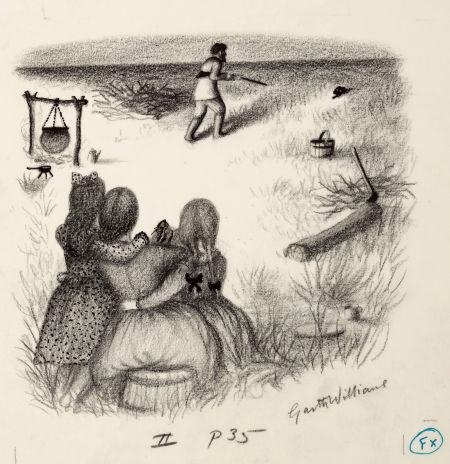


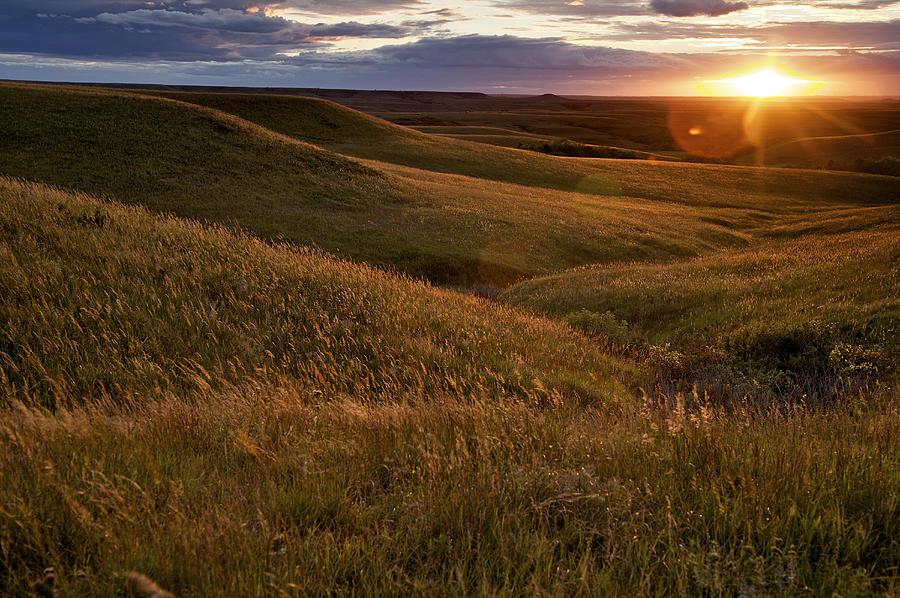




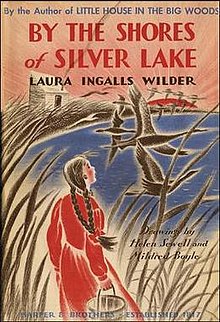


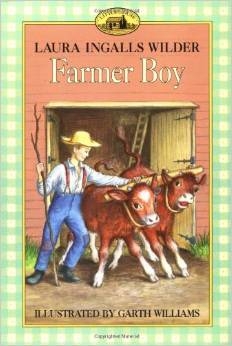






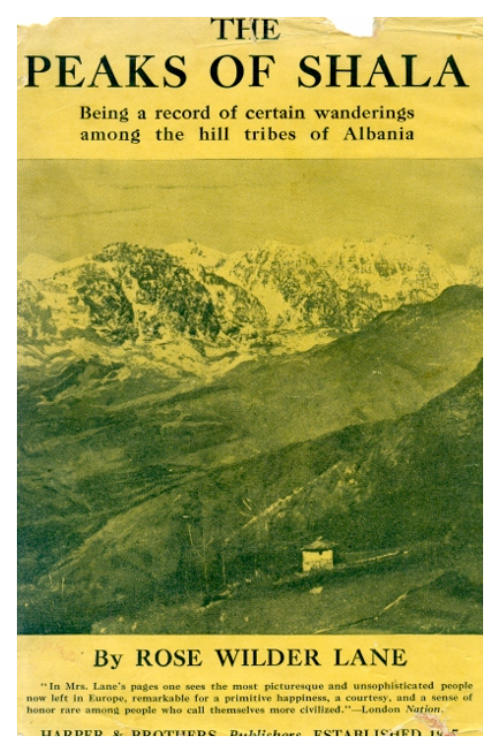




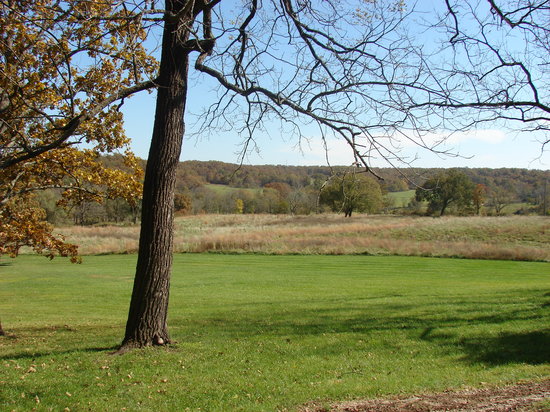






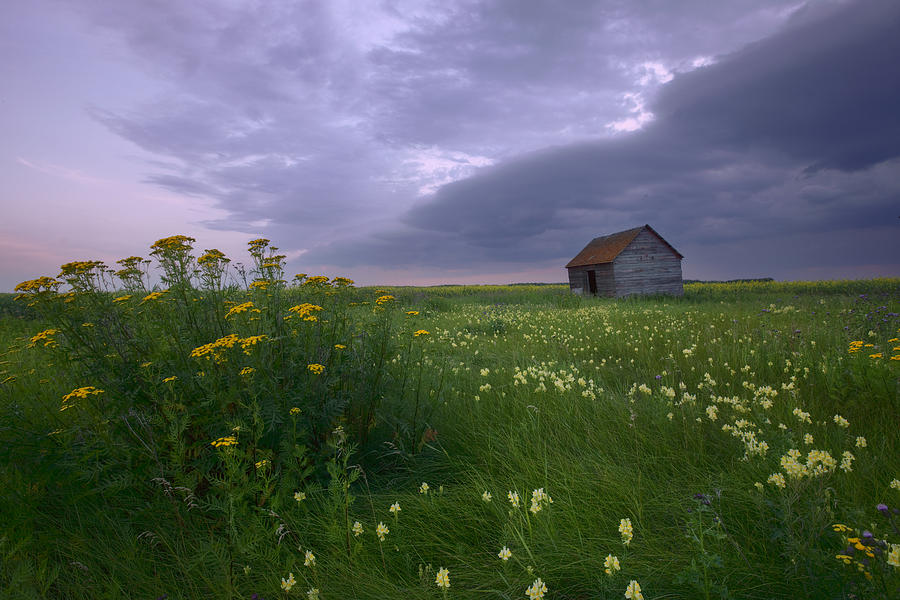


No comments:
Post a Comment